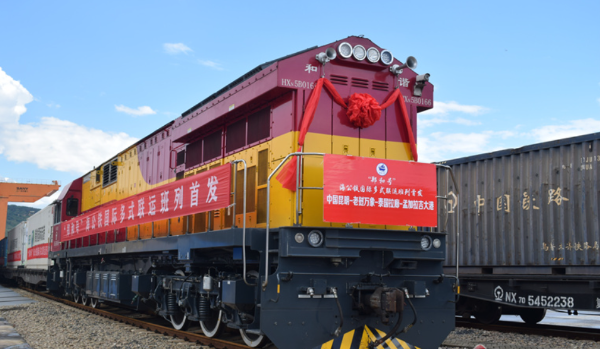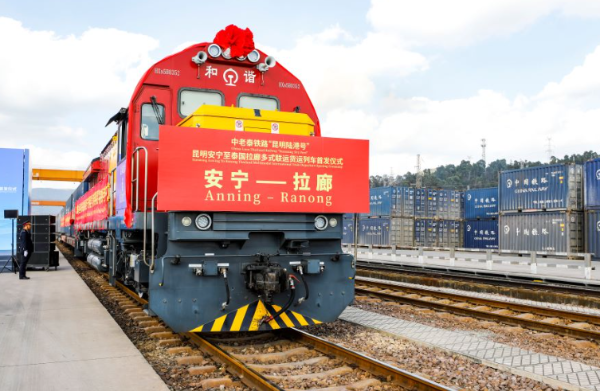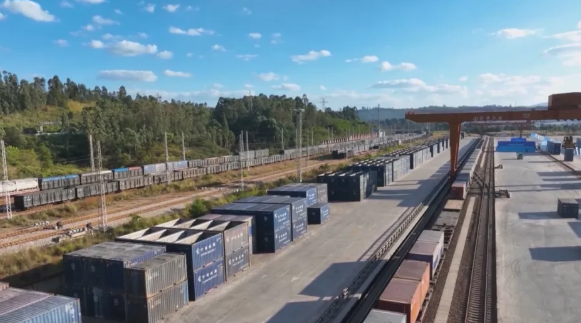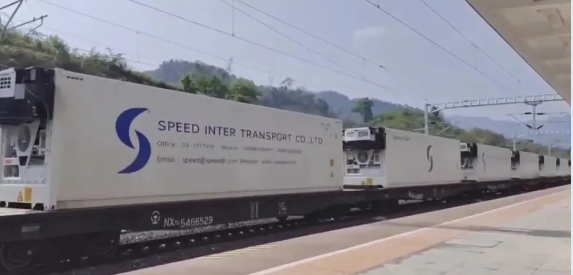"Zheng He" Sea-Road-Rail Multimodal Transport Service Launches

On July 4th, the first train of the "Zheng He" Sea-Road-Rail International Multimodal Transport Service departed from Kunming, Yunnan.

Named after the renowned navigator Zheng He, this sea-road-rail international multimodal train is carrying 26 containers of Yunnan specialties, including vegetables, fertilizers, and animal feed. Departing from Zheng He's hometown of Kunming, it traverses the China-Laos Railway to Vientiane, Laos, and then divides into three routes to complete the transportation:
Route One
Transfer to the Thai railway network to reach Changwat Saraburi in Thailand.
Route Two
Connect to road transport to Laem Chabang Port in Thailand, followed by sea freight to Singapore.
Route Three
Connect to road transport to Ranong Port in Thailand, then by sea to Yangon Port in Myanmar, and continue sailing to Chittagong Port in Bangladesh—this route establishes a new "Kunming to Chittagong" corridor.

Previously, under traditional modal transport, the over 6,000-kilometer rail-sea combined route from Kunming to Chittagong required railway transport from Kunming to Qinzhou Port, switching to maritime transit via the Malacca Strait to Chittagong in Bangladesh, taking nearly 40 days in total. The newly inaugurated route adopts a sea-road-rail intermodal approach, reducing the transit time to approximately 18 days for about 4,300 kilometers—more than a 50% increase in efficiency—and notably avoids passing through the Malacca Strait. This greatly enhances transport speed, significantly lowers logistics costs, and opens an efficient, convenient new pathway for "Yunnan Products Reaching Beyond Yunnan" and "Yunnan Products Going Global ."
"The maiden voyage of the 'Zheng He' is not just a cargo transit but an excellent opportunity for Yunnan products to integrate into the global supply chain," said Tang Heng, General Manager of Yunnan Tengjin Logistics Co., Ltd. He emphasized that leveraging the China-Laos Railway and the Southern International Land-Sea Corridor, this multimodal service directly connects plateau products to international markets, helping Yunnan integrate into the global supply chain system and significantly enhancing the competitiveness and value chain position of 'Yunnan products'."

This train service works in synergy with the China-Laos-Thailand Railway "Kunming Dry Port" service, launched on November 19, 2024. As of May 2025, the "Kunming Dry Port" has operated 25 regular services, departing from Taohua Village Freight Station at Anning North Port of Kunming International Land Port, utilizing combined rail, road and sea transportation via the China-Laos-Thailand Railway to ultimately reach Ranong Port on Thailand's Indian Ocean coast.

In recent years, Yunnan has continuously strengthened connectivity with neighboring countries' transport infrastructure and harmonized transportation regulations. The regional network now facilitates easier and more efficient international transport. Kunming has successively launched international freight rail links such as the "Shanghai-Yunnan Lancang-Mekong Express," "Yunnan-Guizhou Lancang-Mekong Express," and "Hunan-Yunnan Lancang-Mekong Express." Additionally, Kunming is developing bi-directional fast-track customs clearance modes such as the "Lancang-Mekong Express," "China-Laos Railway + China-Europe Railway Express," and "Cross-Border E-commerce + Railway Transport."

Yunnan, leveraging the breakthrough achievement of the China-Laos Railway, is forging an open economic pattern with Kunming at its core that extends eastward to the New Western Land-Sea Corridor, connects westward with the Bangladesh-China-India-Myanmar Economic Corridor, radiates southward to ASEAN nations, and links northward with the Chengdu-Chongqing Twin-City Economic Circle.